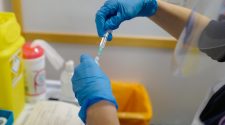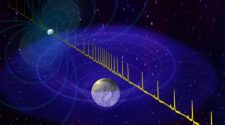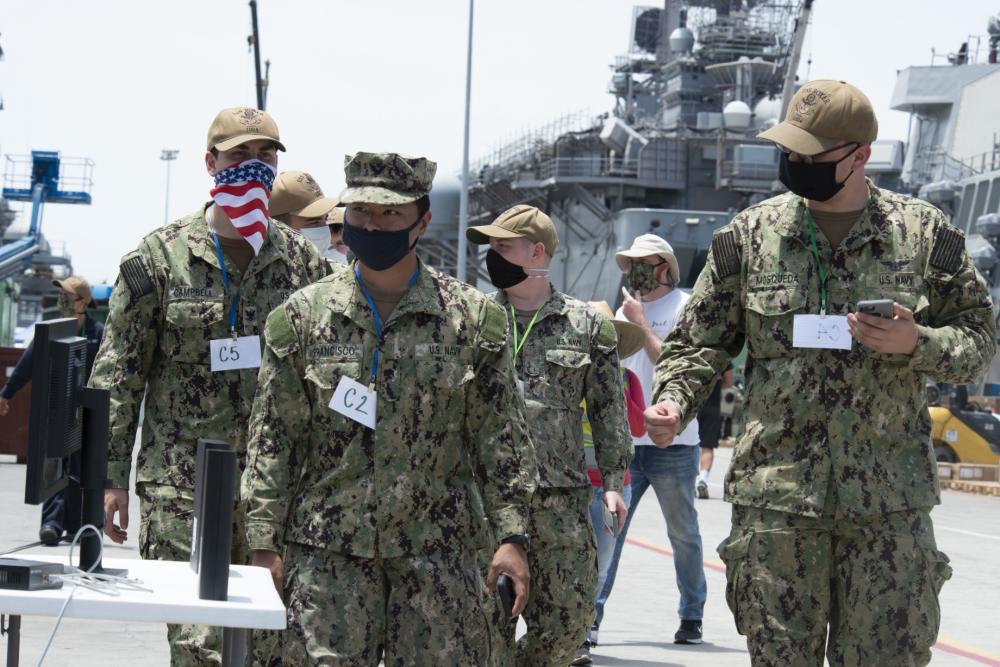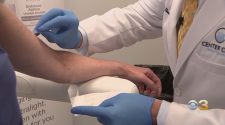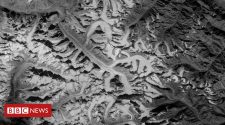Naval Information Warfare Systems Command (NAVWAR) joined more than 100 dedicated scientists, engineers, industry representatives and service members in the execution of 24 technology experiments as part of an annual, large-scale, at-sea experiment concluding November 5, with the final report scheduled for release in early January 2021.
In its 18th year of execution, Trident Warrior 2020 (TW20) put emerging technologies into the hands of the warfighter for evaluation in an operational environment over a five-month period, allowing the Navy and its partners to gain valuable insights and incorporate real-world fleet feedback early in the research, development and acquisition process. Fleet Experimentation initiatives were conducted aboard Navy ships and ashore facilities in the Southern California operating area, with a few initiatives executed in the Hawaii operating area.
“The Trident Warrior series provides a great venue for rapid learning,” said NAVWAR Commander Rear Adm. Small. “It allows us to quickly identify, with direct fleet Sailor and Marine feedback, what is working and what is not as we try to solve hard problems together.”
Every two years, Trident Warrior conducts experiments in the Hawaii operating area during Rim of the Pacific (RIMPAC), the largest multinational maritime exercise in the world. However, due to COVID-19 restriction of movement orders and other impacts on participants, TW20 took place separately, while RIMPAC pivoted to a shorter two-week at-sea exercise with fewer participating countries.
Co-sponsored by NAVWAR, Third Fleet and the Navy Warfare Development Command, TW20 initiatives spanned the entire spectrum of warfare and included high priority focus areas linked to Distributed Maritime Operations and its key enablers.
These initiatives involved government organizations from across the Department of Defense and included joint and coalition partners such as:
• Defense Advanced Research Projects Agency (DARPA)
• Naval Sea Systems Command (NAVSEA)
• Marine Corps Warfighting Laboratory (MCWL)
• Air Force Research Laboratory (AFRL)
• Australia, Canada, New Zealand, United Kingdom, and United States (AUSCANNZUKUS) Naval Command, Control, Communications and Computers (C4) Organization
• North Atlantic Treaty Organization (NATO) allies
• Indo-Pacific partner nations
• Naval Information Warfare System Center (NIWC) Pacific
• Naval Information Warfare System Center (NIWC) Atlantic
During the experiment, one of the technologies tested was a wireless tracking device known as Testbed for “Internet of Things” (IOT)-based Privacy Preserving PERvasive Spaces (TIPPERS). Developed by NIWC Pacific and funded by DARPA, TIPPERS is a system that uses commercially available wireless communications and tagging technologies to track the locations and other attributes of equipment, personnel and spaces.
Throughout TW20, TIPPERS demonstrated the ability to correlate and display tracking data in near real time, exhibiting its potential for use in COVID-19 quarantine zone verification, access restriction and verified secure transfer. Further assessment has demonstrated its potential for additional uses, such as proximity detection and retroactive contact tracing.
Also developed by NIWC Pacific, operators tested a device that collects undersea data using four visible color lasers (red, green, blue, violet) in a single handheld-sized tool. The technology, known as the Wavelength Auto-selector via Retroreflection for Optical Communications Under the Sea (WAR FOCUS), conducted two days of successful data collection. The multiple embedded sensors allowed for precise measurements of various aspects of the ocean environment, providing a holistic understanding of undersea environmental impacts on sensors and systems.
Additionally, NIWC Pacific and the Johns Hopkins University Applied Physics Laboratory tested a networking system called light fidelity (Li-Fi). Li-Fi is a technology that transmits data over commercial light-emitting diode (LED) lighting infrastructure, via Li-Fi hotspots for internet and intranet network connectivity that is similar to Wi-Fi. This technology will benefit the fleet by providing internal wireless network connectivity aboard ships while reducing radio frequency emissions, and will enhance the security of shipboard data transmission over a wireless network.
Other TW20 initiatives ranged from maritime domain awareness, networks, information operations, artificial intelligence, machine learning, cyber security, and other technologies for command, control, communications, computers, intelligence, surveillance and reconnaissance.
“TW20 combined all of these initiatives into a small set of experimentation venues, making the most of time available with naval assets—afloat and ashore,” said Dr. Earl Williams, Trident Warrior Deputy Director. “These types of experiments are conducted to learn about the effects of manipulated variables on our warfighting capabilities. Analysis of these experiments could lead to modified system designs, improved operating procedures, new and updated doctrine, technical analysis for decision makers, and actionable recommendations for the future fleet.”
Concluding the event, NAVWAR analyzed the data collected and is incorporating it into a final report to be released January 2021.
Additionally, planning for Trident Warrior 2021 (TW21) is already well underway, with the NAVWAR team hosting a virtual main planning conference December 7-11, 2020. TW21 is scheduled to take place offshore and in port in Southern California during the summer of 2021, in conjunction with Carrier Strike Group training events.
About NAVWAR:
NAVWAR identifies, develops, delivers and sustains information warfighting capabilities and services that enable naval, joint, coalition and other national missions operating in warfighting domains from seabed to space and through cyberspace. NAVWAR consists of more than 11,000 civilian, active duty and reserve professionals located around the world.
| Date Taken: | 01.07.2021 |
| Date Posted: | 01.07.2021 16:30 |
| Story ID: | 386559 |
| Location: | SAN DIEGO, CA, US |
| Web Views: | 13 |
| Downloads: | 0 |
PUBLIC DOMAIN
This work, NAVWAR Tests Emerging Technologies at Trident Warrior 2020; Identifies Requirements to Operate Forward, by Elisha Gamboa, identified by DVIDS, must comply with the restrictions shown on https://www.dvidshub.net/about/copyright.



